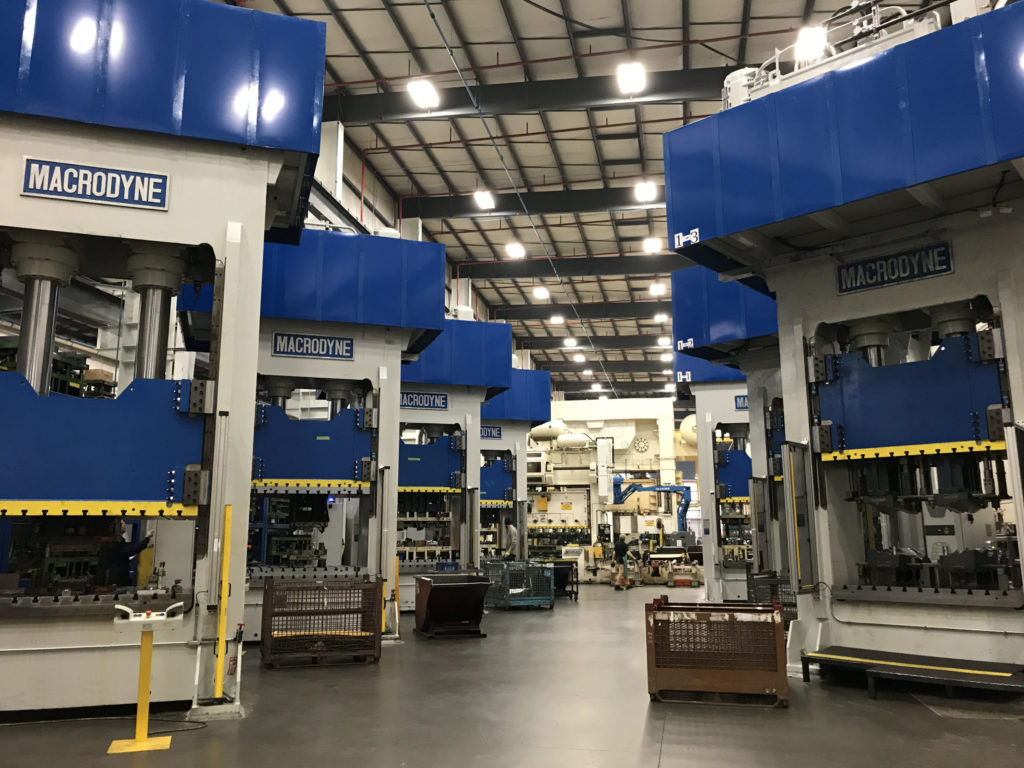Just How Metal Stamping Transforms Manufacturing Performance
Just How Metal Stamping Transforms Manufacturing Performance
Blog Article
Letting Loose the Possible of Metal Stamping: Specialist Tips and Finest Practices Exposed
In the world of metal marking, where precision and effectiveness reign supreme, the mission to optimize processes and unlock covert possibilities is a perpetual quest. As we browse through the intricate globe of metal stamping, a better look at the complexities of tooling layout, material choice, production efficiency, quality control, and arising fads guarantees a treasure trove of understandings waiting to be uncovered.
Tooling Design Optimization
Maximizing tooling design is vital for boosting efficiency and accuracy in metal stamping procedures. A well-balanced tooling style can significantly impact the quality and cost-effectiveness of metal stamping operations. By very carefully thinking about variables such as product option, pass away setup, and part geometry, suppliers can improve production processes and enhance overall item top quality.
One key aspect of tooling layout optimization is choosing one of the most ideal products for the punches and passes away utilized in the marking process. Materials with high wear resistance and durability are chosen to guarantee longevity and reduce tooling maintenance requirements. Furthermore, die setup plays a crucial role in attaining uniformity and uniformity in stamped components. Appropriate die style can aid protect against issues such as wrinkling, tearing, and extreme springback, leading to greater manufacturing yields and reduced scrap rates.
In addition, enhancing component geometry via tooling design can assist minimize material waste and manufacturing time. By meticulously shaping passes away and punches to match the preferred part specs, makers can attain tighter resistances and boosted component top quality. On the whole, investing time and sources in maximizing tooling style can lead to significant long-term advantages for steel marking procedures.

Material Option Strategies
Strategically selecting materials for steel stamping tooling is extremely important for guaranteeing toughness and efficiency in producing processes. When choosing materials for steel stamping applications, several vital elements must be taken into consideration. The very first consideration is the kind of material being stamped. Various materials, such as light weight aluminum, stainless steel, or copper, require details tooling materials to guarantee optimum performance and long life.
An additional essential element in material option is the anticipated production volume - Metal Stamping. For high-volume manufacturing runs, tooling products with remarkable wear resistance and durability, such as tool steels or carbide, are typically favored to endure the roughness of constant marking operations
In addition, the intricacy of the stamping layout and the required accuracy also play a substantial function in product choice. For intricate stamping patterns or limited tolerances, materials with high thermal conductivity and exceptional machinability, like beryllium copper or tool steel alloys, may be preferable to accomplish the desired results.
Manufacturing Performance Techniques
To enhance making output and minimize production prices, carrying out efficient strategies in steel marking procedures is critical. Automated steel stamping machines can perform jobs with accuracy, consistency, and at a much faster rate than hand-operated labor, leading to increased performance and lowered cycle times.
Another method to boost manufacturing efficiency is through constant procedure renovation. Carrying out regular audits and performance evaluations can help determine bottlenecks, ineffectiveness, and areas for enhancement within read the steel stamping process. By analyzing data and feedback from these analyses, makers can implement targeted remedies to enhance procedures, rise throughput, and optimize total effectiveness.
Furthermore, taking on lean production principles, such as 5S method and Kanban systems, can aid get rid of waste, enhance process, and enhance overall productivity in metal marking procedures. By fostering a society of their website constant enhancement and equipping staff members to add concepts for efficiency gains, producers can unlock the complete capacity of their metal stamping processes.
Quality Assurance Measures
Structure on the foundation of efficient manufacturing techniques in steel marking processes, making sure rigorous quality assurance steps is essential for maintaining item standards and customer contentment. Quality assurance in metal marking entails methodical assessment, testing, and surveillance of the production processes to identify and correct any kind of discrepancies or issues that could endanger the final item's integrity (Metal Stamping). Carrying out steps such as regular equipment upkeep, in-process assessments, and extensive testing of finished parts can aid find issues early and prevent costly rework or item remembers
In addition to aggressive high quality control steps, it is important to develop clear top quality requirements and requirements that align with client demands. Normal audits and reviews of quality processes can assist recognize areas for enhancement and make sure uniformity in item top quality. By promoting a society of top quality consciousness amongst staff members and providing ample training on quality assurance treatments, makers can improve total product reliability and brand credibility. Ultimately, spending in durable quality assurance measures not only safeguards against issues and non-conformities but also paves the way for continual service development and client commitment.

Innovative Metal Stamping Technologies
Developments in metal stamping technologies have revolutionized the manufacturing industry, improving effectiveness and accuracy in the manufacturing process. One of the most significant developments is the development of servo press technology. Servo presses provide unequaled control over the marking procedure, permitting changes in dwell, pressure, and speed time with remarkable precision. This degree of control causes higher quality parts, minimized downtime for tooling modifications, and raised overall productivity.

In addition, the adoption of additive production strategies in steel stamping, such as 3D printing of die parts, has structured the tooling layout and manufacturing process. This strategy enables for higher style versatility, quick prototyping, and cost savings in tooling manufacturing. By leveraging these innovative modern technologies, manufacturers can unlock new levels of effectiveness, top quality, and competitiveness in the metal stamping market.
Conclusion
Finally, the optimization of tooling style, critical material option, effective production techniques, top quality control actions, and innovative innovations are important for letting loose the full capacity of metal stamping. By carrying out these best practices and professional ideas, producers can enhance productivity, boost quality, and remain affordable in the steel marking sector. It is essential for business to constantly review and improve their processes to achieve success in this area.
As we navigate with the complex globe of metal marking, a better look at the intricacies of tooling design, product selection, production efficiency, top quality control, and emerging fads guarantees a prize trove of understandings waiting to be discovered. A well-balanced tooling style can dramatically affect the top quality and cost-effectiveness of metal stamping procedures.Building on the structure of reliable production strategies in metal marking processes, making sure strict top quality control procedures is necessary for preserving item requirements and consumer fulfillment. Quality control in steel stamping involves organized evaluation, screening, and monitoring of the production processes to determine and remedy any deviations or defects that might endanger the final product's integrity.In conclusion, the optimization of tooling style, calculated product selection, reliable production methods, top quality control measures, and ingenious innovations are crucial for releasing the full capacity of steel marking.
Report this page